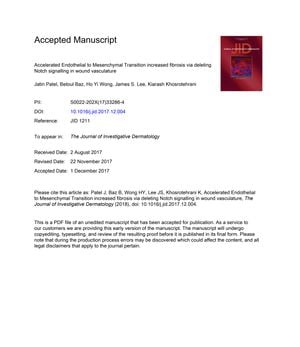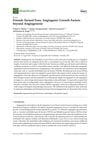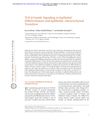Accelerated Endothelial to Mesenchymal Transition Increased Fibrosis via Deleting Notch Signaling in Wound Vasculature
December 2017
in “
Journal of Investigative Dermatology
”

TLDR Disrupting Notch signaling in blood vessels increases scarring during wound healing in mice.
The document summarizes a study that explored the effects of disrupting Notch signaling on endothelial to mesenchymal transition (EndMT) during skin wound healing in mice. The researchers specifically deleted the RBPJ gene, which is crucial for Notch signaling, in the vasculature of mice and tracked the changes in endothelial and mesenchymal markers. They found that this deletion led to an accelerated EndMT, resulting in slower wound healing and increased fibrosis, as evidenced by a significant increase in mesenchymal markers and a decrease in endothelial markers. The study, which included groups of 5 mice for each experimental condition, concluded that Notch signaling plays a vital role in regulating EndMT and preventing excessive fibrosis during wound healing, suggesting that maintaining Notch signaling could be beneficial for reducing scarring in wounds.


